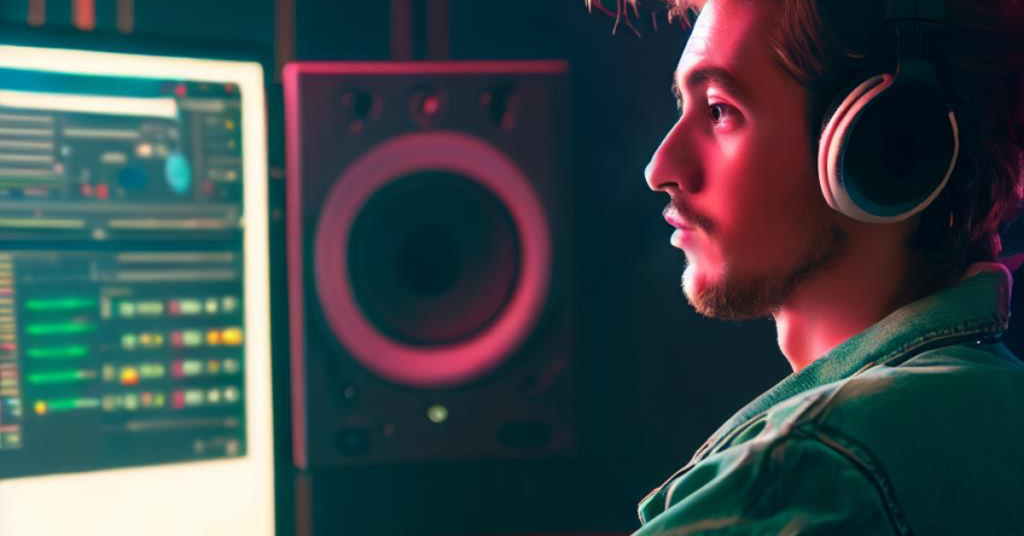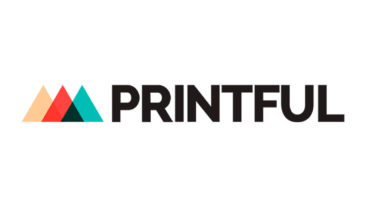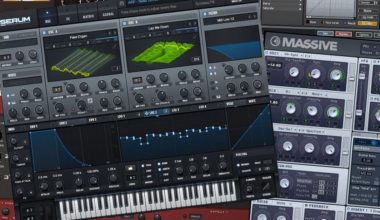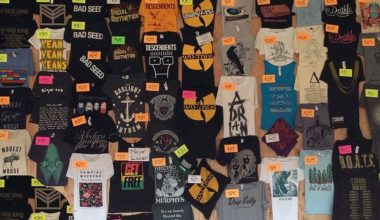
If you’ve been navigating the vast universe of music production, you’ve likely encountered the tranquil galaxy of Lo Fi music. It’s a realm where chill beats reign supreme, and the Spotify playlist is the throne everyone is vying for. Today, we’re going to embark on a mission. Our destination? The coveted “Lo Fi Spotify Playlists”. Our goal? To guide you, the talented Lo Fi music producers, on how to get your soothing, atmospheric tracks placed onto these major playlists.
This journey isn’t for the faint of heart. It requires creativity, persistence, and a dash of strategy. But fear not! We’ve got the roadmap, the compass, and the tools you’ll need. So, fasten your seatbelts, tune your instruments, and let’s dive into the world of Lo Fi Spotify Playlists.
Whether you’re a seasoned producer or a newbie just starting out, this guide is your ticket to understanding the ins and outs of playlist placements. We’ll explore the art of crafting playlist-worthy beats, the power of algorithmic playlists, the potential of small playlists and collaborations, and the secret sauce to landing a spot on Spotify’s editorial playlists.
So, are you ready to amplify your music, reach a wider audience, and make your mark in the Lo Fi music scene? Let’s hit the play button and start this sonic adventure!
The Art of Crafting Playlist-Worthy Beats
Before we delve into the nitty-gritty of playlist placements, let’s address the elephant in the room – your music. It’s like the secret sauce in your grandma’s famous recipe; without it, the dish just doesn’t taste the same. So, how do you create Lo Fi beats that are not just good, but playlist-worthy?
First, let’s talk about tempo. In the world of Lo Fi, less is more. Your beats should be like a calm river, flowing smoothly between 70 and 85 BPM. This relaxed tempo sets the stage for the chill, laid-back vibe that Lo Fi is known for.
Next, let’s discuss melody. The melody should be soothing, preferably with piano or guitar sounds. These instruments have a natural warmth and intimacy that fits perfectly with the Lo Fi aesthetic. Think of your melody as the main character in your sonic story; it should be compelling enough to draw listeners in and keep them engaged.
Now, onto the drums. The drum pattern in Lo Fi music is typically simple and laid-back. It’s like the heartbeat of your track, providing a steady rhythm that holds everything together. But don’t be afraid to get creative with your drum patterns. Experiment with different sounds and rhythms until you find something that fits your track perfectly.
Finally, we come to the atmospheric elements. This is where you can really let your creativity shine. Rain sounds, city noises, even the hum of a distant crowd can add depth and texture to your track. These elements help to create a sonic landscape that transports your listeners to a world of tranquility. It’s like adding the finishing touches to a painting; it brings everything together and completes the picture.
Remember, your goal is to create a sonic experience that captivates your listeners. Every element in your track should work together to create a cohesive, immersive soundscape. So, take your time, experiment with different sounds and techniques, and most importantly, have fun with it!
The Algorithmic Playlist: Your New Best Friend For Getting on Lo Fi Spotify Playlists
Now that you’ve got your killer track, it’s time to introduce it to the world. But where do you start? The answer lies in the heart of Spotify’s algorithmic playlists. These are not your average playlists; they’re like the cool kids at school. Get in with them, and you’re golden.
Algorithmic playlists, such as Release Radar and Discover Weekly, are automatically generated based on a user’s listening habits. They’re like personalized radio stations, playing a mix of songs tailored to each listener’s unique musical taste. This means that if your track makes it onto these playlists, it’s because Spotify’s algorithm thinks it’s a good match for the listener. And when Spotify’s algorithm thinks you’re a good match, you’ve got a high chance of winning over a new fan.
But how do you get onto these algorithmic playlists? It all starts with your music. The more people listen to your tracks, the more data Spotify’s algorithm has to work with. This means that every stream, every save, and every share counts. So, don’t be shy about promoting your music. Share it on social media, send it to your friends, play it at your gigs. The more exposure your music gets, the better your chances of landing on these playlists.
Another important factor is consistency. The Spotify algorithm loves artists who regularly release new music. So, keep those tracks coming! Regularly releasing new music not only keeps your current fans engaged, but it also increases your chances of being discovered by new listeners.
Finally, don’t forget about your existing fans. Encourage them to follow you on Spotify and save your tracks to their personal playlists. The more interaction your tracks get, the more likely they are to be picked up by the algorithm.
So, while landing a spot on a major playlist is the dream, don’t underestimate the power of Spotify’s algorithmic playlists. They may not have the prestige of editorial playlists, but they can be just as effective, if not more so, in helping you reach a wider audience.
The Power of Small Playlists and Collaboration
While landing a spot on a major playlist is the dream, don’t underestimate the power of smaller playlists. These are often curated by regular Spotify users and can have thousands of followers. They might not have the same reach as the big playlists, but they can be a stepping stone to greater visibility.
Think of these small playlists as hidden gems scattered across the Spotify landscape. Each one is a unique community of listeners, and landing a spot on these playlists can give your music exposure to a new audience. It’s like playing a gig at a small venue; you might not be playing to a stadium crowd, but the people who are there are there to listen.
But how do you get onto these small playlists? It starts with research. Spend some time browsing Spotify and look for playlists that feature music similar to yours. Once you’ve found a few potential targets, reach out to the curators. Send them a polite message introducing yourself and your music, and ask if they’d consider adding your track to their playlist. Remember, be respectful and professional. Playlist curators are often music lovers just like you, and a little kindness goes a long way.
Now, let’s talk about collaboration. Working with other artists can be a powerful way to increase your visibility on Spotify. It’s like joining forces with a fellow superhero; together, you can reach more people than you could on your own.
Collaboration can take many forms. You could team up with another artist to produce a track, remix one of their songs, or even just feature on each other’s tracks. The key is to collaborate with artists who have a similar style or audience to yours. This way, you’re likely to attract listeners who will enjoy your music.
Remember, collaboration is a two-way street. It’s not just about what you can gain from the other artist, but also about what you can offer them. So, approach potential collaborators with a spirit of mutual benefit and respect.
In conclusion, while the big playlists might get all the glory, don’t overlook the power of small playlists and collaboration. They might not be as glamorous, but they can be just as effective in helping you reach your goals.
The Secret Sauce: Spotify Editorial Playlists
Finally, we come to the holy grail of Spotify playlists – the editorial playlists. These are curated by Spotify’s in-house team and can give your music a massive boost. But how do you get on these elusive playlists?
Firstly, it’s important to understand the nature of these playlists. Editorial playlists are carefully curated collections of music that are designed to provide listeners with the best possible listening experience. They’re like the VIP section of the Spotify club – exclusive, influential, and highly sought after.
Getting your track onto an editorial playlist can significantly increase your visibility on Spotify. It’s like getting your song played on prime time radio; the exposure can be massive. But getting onto these playlists isn’t easy. It requires a combination of quality music, strategic planning, and a bit of luck.
One approach is to submit your music directly to Spotify for playlist consideration. This can be done through Spotify for Artists, a platform that allows artists to manage their profile and pitch their music to Spotify’s editorial team. However, this requires planning and timing. You need to submit your track at least a week before its release to be considered for a spot on your followers’ Release Radar playlist.
Another strategy is to work with Lo Fi labels that have connections to Spotify editors. These labels can help get your music in front of the right people and increase your chances of playlist placement. It’s like having a well-connected friend who can introduce you to the right people at a party.
But remember, getting onto an editorial playlist is just the first step. Once you’re there, you need to make the most of the opportunity. This means promoting your playlist feature, engaging with your new listeners, and continuing to release quality music.
In conclusion, landing a spot on a Spotify editorial playlist can be a game-changer for your music career. But it requires hard work, persistence, and a bit of strategic planning. So, keep making great music, keep promoting your tracks, and who knows? You might just find your track on one of Spotify’s most coveted playlists.
Wrapping Up: Getting on Major Lo Fi Spotify Playlists
Getting your Lo Fi music on major Spotify playlists may seem like a daunting task, but with hard work, consistency, and a bit of strategic planning, it’s definitely achievable. Remember, the journey to success in the music industry is a marathon, not a sprint. It’s about creating quality music, building relationships, and constantly learning and adapting.
As you embark on this journey, remember to enjoy the process. Celebrate your wins, learn from your setbacks, and never lose sight of your love for music. After all, it’s this passion that drives us as artists and keeps us pushing forward, even when the road gets tough.
Don’t be discouraged if you don’t see immediate results. Success in the music industry doesn’t happen overnight. It takes time to build a fanbase, develop your sound, and make the right connections. But with patience, perseverance, and a little bit of luck, you can achieve your goals.
So, there you have it, folks! Your comprehensive guide to getting your Lo Fi music onto major Spotify playlists. Now, go forth and conquer the Lo Fi music scene.
As you navigate your way through the music industry, remember that every artist’s journey is unique. What works for one person might not work for another, and that’s okay. The important thing is to stay true to yourself, keep creating music that you love, and never stop believing in your dreams.
And finally, don’t forget to have fun! Making music is a creative expression, and it should bring you joy. So, keep experimenting, keep exploring, and most importantly, keep enjoying the process. After all, the journey is just as important as the destination.





